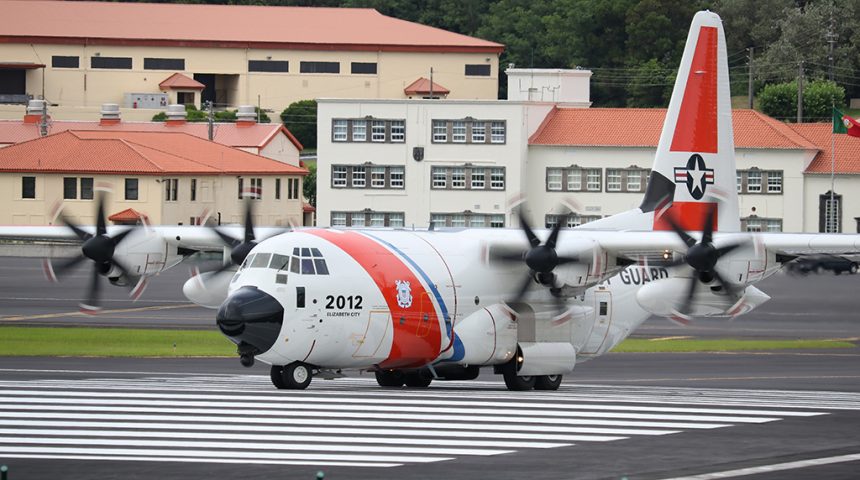ASAREX is an exercise held annually by the Portuguese Air Force at Lajes Air Base.
ASAREX is a SAR (Search and Rescue) exercise organized each year since 2015 (only exception in 2020, when it was cancelled because of the Covid-19 pandemic) by the Portuguese Air Force at Air Base nº 4, Lajes Air Base, Terceira island, in the Azores. This year’s iteration took place from July 26 through 30, 2021, and gathered several foreign and domestic participants.
For what concerns the foreign participants, the Royal Canadian Air Force, sent 1x CC-130H Hercules from CFB Greenwood, reg 130333, radio callsigns “TSKR333” / “GRNWD56” / “CFC2103”, along with a SAR TECH team; the New York Air Guard of the U.S. Air Force, at Francis S Gabreski airport, Long Island, sent 1x HC-130J Super Hercules reg 18-5879/LI, with a parajumper team, that used callsign “KING65”; the U.S. Coast Guard sent 1x HC-130J Super Hercules from CGAS Elizabeth City, reg 2012, with callsign “CG2012”.
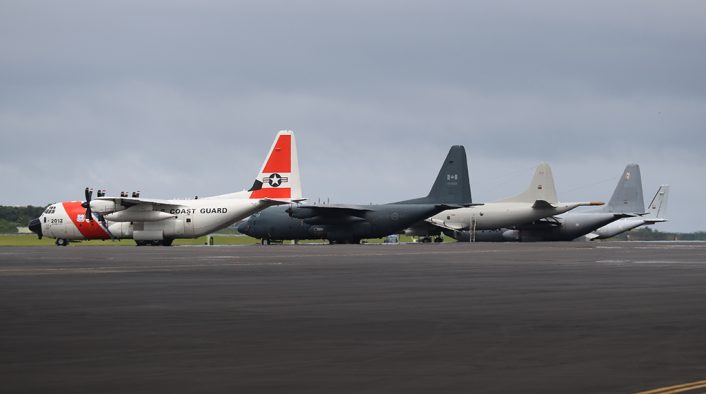
The Portuguese Air Force took part with:. 1x 601 Sq “Lobos” P-3C Cup+ from Beja AB, reg 14810 using callsign “Orion47”; 1x 501 Sq “Bisontes” C130H from Montijo AB, reg 16805 using callsign “HERKY45”; 1x C295 502 Sq “Elefantes” drawn from the Azores Air detachment, reg 16707, using callsign “SNOUT46”; 2x EH101 Merlin helicopters from 751 Sq “Pumas”, drawn from the Azores Air detachment, regs 19601 and 19606 using “MERLN57” and “WIZRD55” callsigns.
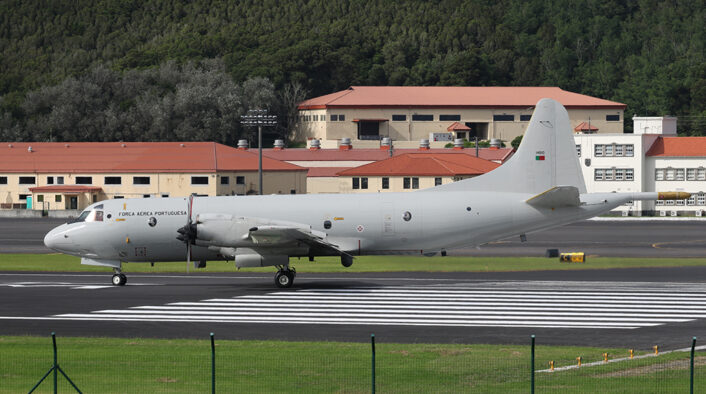
Other Portuguese units detached several personnel and even a military ship:
- The Portuguese Navy with one frigate;
- The Portuguese Border patrol (SEF);
- The Portuguese National Guard (GNR);
- The Portuguese Azorean Civilian Protection force and Fire brigade (SRPCBA);
- The Portuguese Maritime Police.
Portugal is responsible for the SAR mission in Portuguese territorial waters and Exclusive Economic Zones (EEZ) and particularly around the Azores Archipelago of nine islands plus the Atlantic vastness that falls under the Santa Maria Oceanic FIR, where several air corridors cross from east to west, as well as dozens of shipping lanes that thread their path through this geographical area. Adding to that the unstable weather conditions in the Atlantic basin, featuring cold fronts, lows, tropical storms and associated high force gale winds, all year round and we have all the ingredients for distress calls, missing vessels, shipwrecks or ill people in ships or yachts.
Just to have an idea, the Santa Maria FIR covers an open ocean area of 5 million km2, larger than the entire European Union which has an overland area of 4.423 million sqkm.
This was the perfect setting that brought together these military forces, each responsible for SAR missions in their respective territories, taking the chance to train together for live missions, refining TTP protocols – tactics, techniques and procedures.
ASAREX exercise provides an important opportunity for crews to share experiences and train in a maritime and coastal environment, sometimes in extreme weather conditions as was the case in May 2015, when the exercise was interrupted due to a real situation developing in the atlantic, when some yachts from a regatta sank due to a storm, with several people being rescued in rough seas and strong winds conditions.
Exercise details
Jul. 26, Day 1, was reserved for arrivals and to welcome all crews;
Jul. 27, Day 2, saw a morning brief being staged with the exercise kicking off in the afternoon and evening;
Jul. 28, Day 3, activities were split into two exercise periods, morning and evening;
Jul. 29, Day 4, the last exercise day, with a morning mission, overall debriefing and farewell notes;
Jul. 30, Day 5, saw participants depart.
A morning and evening exercise was practiced on day 2 and 3 except for days 1 and 4 when just one mission was flown.
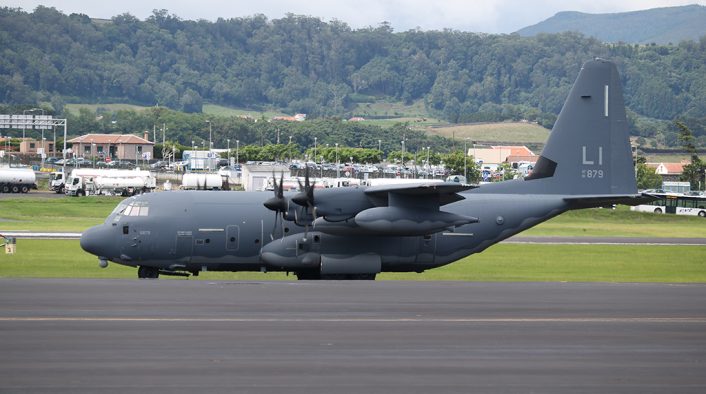
Several different scenarios were arranged as part of ASAREX.
The first scenario, on Day 1, saw the participating units respond to an aircraft crash in the ocean. The USAF HC130J flew straight through to the zone, on arrival from home base, with the PJs jumping to the water to assist the victims. Same with the Canadian SAR techs. The remaining participants were involved in the search, dropping liferafts (simulated or real).
The second scenario simulated an accident in Pico island with missing/victims. The PoAF dispatched the C295 with the Portuguese Civilian Protection plus the Portuguese National guard taking part in the search using search dogs. This was a high altitude recovery exercise taking advantage of Pico island`s 2,351 meters altitude.
The third scenario focused on a simulated fire aboard a passenger ferry ship. A shipwreck rescue involving dropping liferafts and other life saving devices with the Canadian SAR Techs jumping to the water to assist.
The fourth scenario simulated the response to an aircraft ditching off the south coast of Terceira island. This exercise saw the involvement of the PoAF Merlin helicopter and also the USAF Pjs.
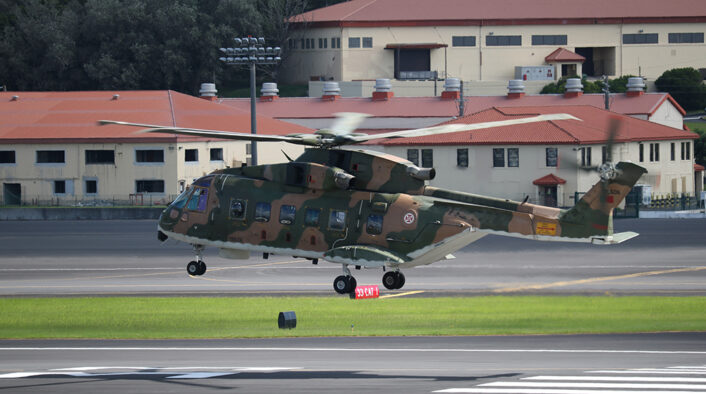
Other ASAREX events included the rescue of patients from ships or victims from cliffs where missions were performed by EH101 Merlin helicopters.
In the end, with all missions successfully accomplished, crews were pleased with their involvement in ASAREX 2021 and, as usual, there were lessons to be learned, allowing all the participants to improve their skills to fine tune the art of Search and Rescue.
The next exercise is slated for 2022 with dates TBA.
A big thank you to our friend and contributor LtCol / Ret`d PoAF Miguel Santos, APS – Associação Portugal Spotters, who provided all the photographs and details about the exercise. Moreover, this article would not have been possible without the kind help of the following persons: Brigadier-General João Pereira, Azores Air Zone Commander; Colonel Filipe Azinheira, Air Base 4 Commander; Senior Master Sergeant José Pinto da Silva, Air Base 4 Meteo Office; Master Sergeant Iolanda Pinto da Silva, Air Base 4 Meteo Office; Jaap Dubbeldam, P3 Orion Research Group, for providing “The Aurora” link; Dr João Toste, APS member, for providing the details about the operational zone areas. Last and not least, the Portuguese Air Force, for hosting this important exercise and allowing all photo captions.

